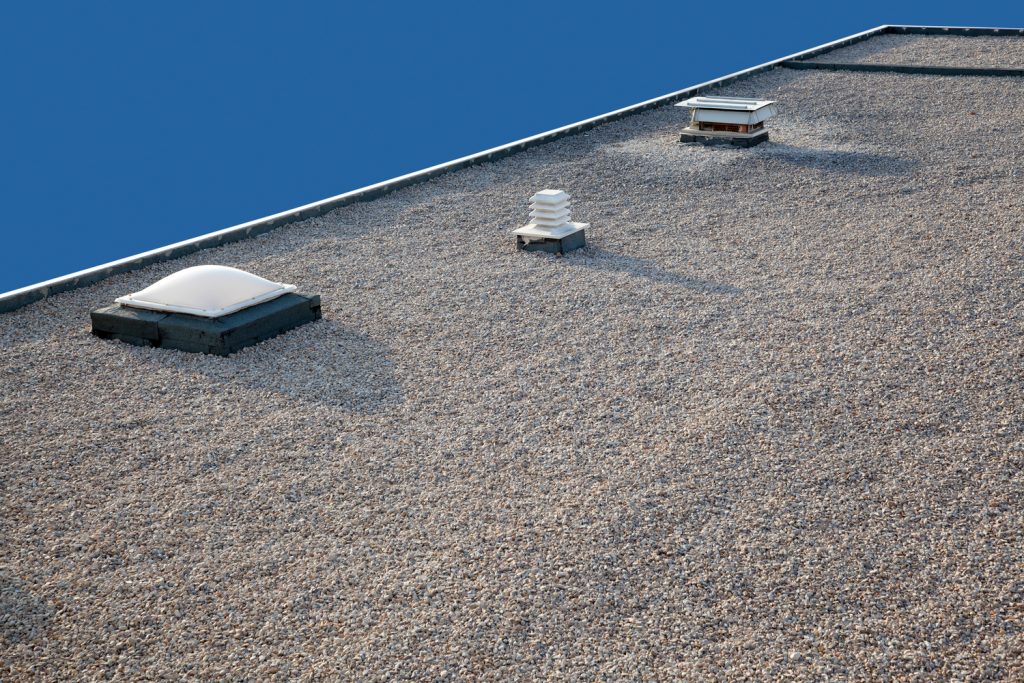Introduction
A roof protects the top structure of a building from precipitation, sun, wind, and other elements- and it is expected to do so for a long time. Roofs are designed systems that are categorized as either steep-slope or flat/low-slope. The slope of a roof is often referred to as the pitch. The slope, or pitch, of the roof is determined by the vertical rise in inches for every horizontal twelve inch (12″) length (called the “run”). A roof with x rise/12 run slope means that for every 12 inches horizontally (run), it rises x inches. Steep-slope roofs shed water and are installed on slopes greater than 3:12. Typical steep-slope roofs are made of shingles.
Flat/low-slope roofs are water and weather-proof membranes on slopes equal and less than 3:12.
Most low-slope roof membranes have three principal components:
- Weatherproofing layer or layers – the weatherproofing component is the most important element because it keeps water from entering a roof assembly.
- Reinforcement – reinforcement adds strength, puncture resistance and dimensional stability to a membrane.
- Surfacing – surfacing is the component that protects the weatherproofing and reinforcement from sunlight and weathe Some surfacings provide other benefits such as increased fire resistance, improved traffic and hail resistance, and increased solar reflectivity.
Roof membranes are applied as either:
- Fully adhered systems – the membrane’s surface area is completely adhered to the roof substra
- Mechanically fastened systems – the membrane is fastened with plates and screws (mechanical fasteners) to the roof substrate.
- Loose-laid and ballasted systems – the membrane is held onto the roof substrate with the weight of balla
Other important factors in a roofing system include:
- Drainage – is achieved by drain installations, scuppers, and drip edge
- Roof Slope
- Fire Resistance/Wind-Uplift Resistance
North American conventional flat/low-slope roof systems include the:
- Built-Up Roof (BUR)
- Modified Bitumen roof
- Single-ply roof
- EPDM
- TPO
- PVC




